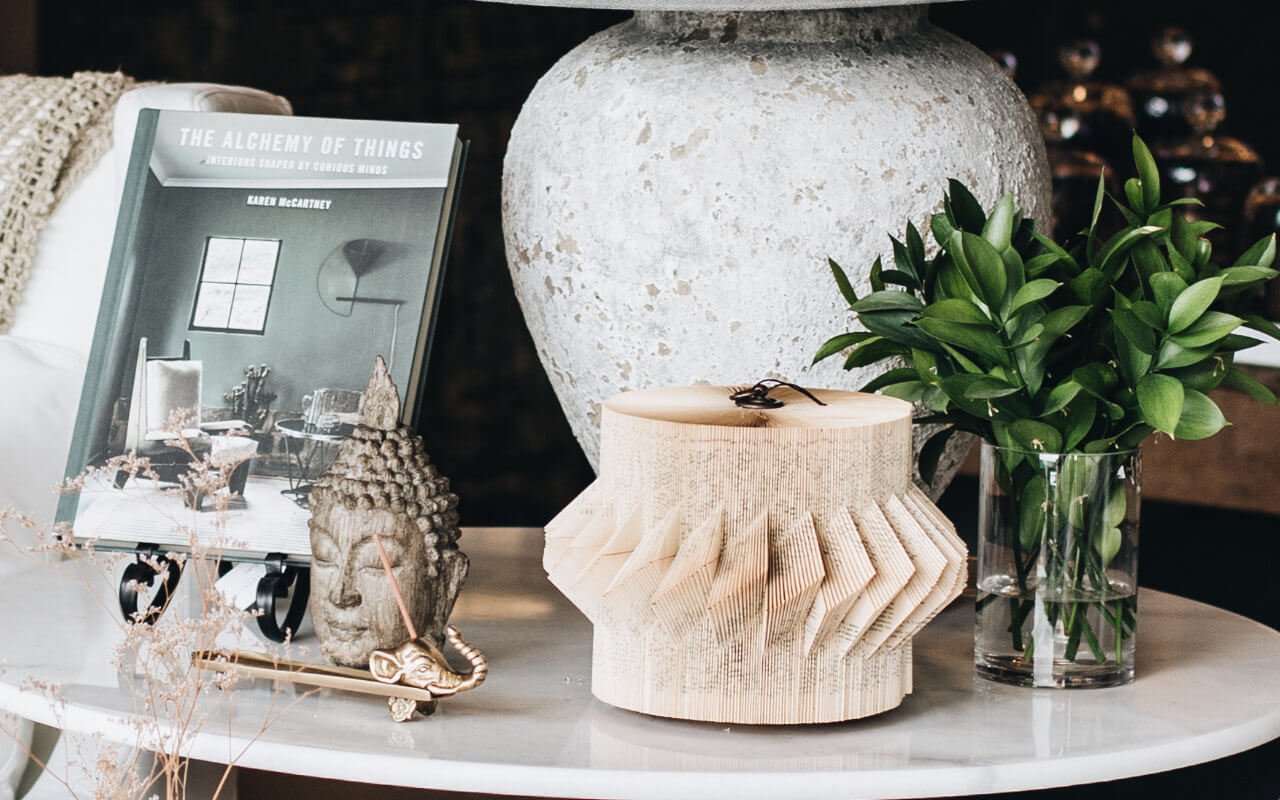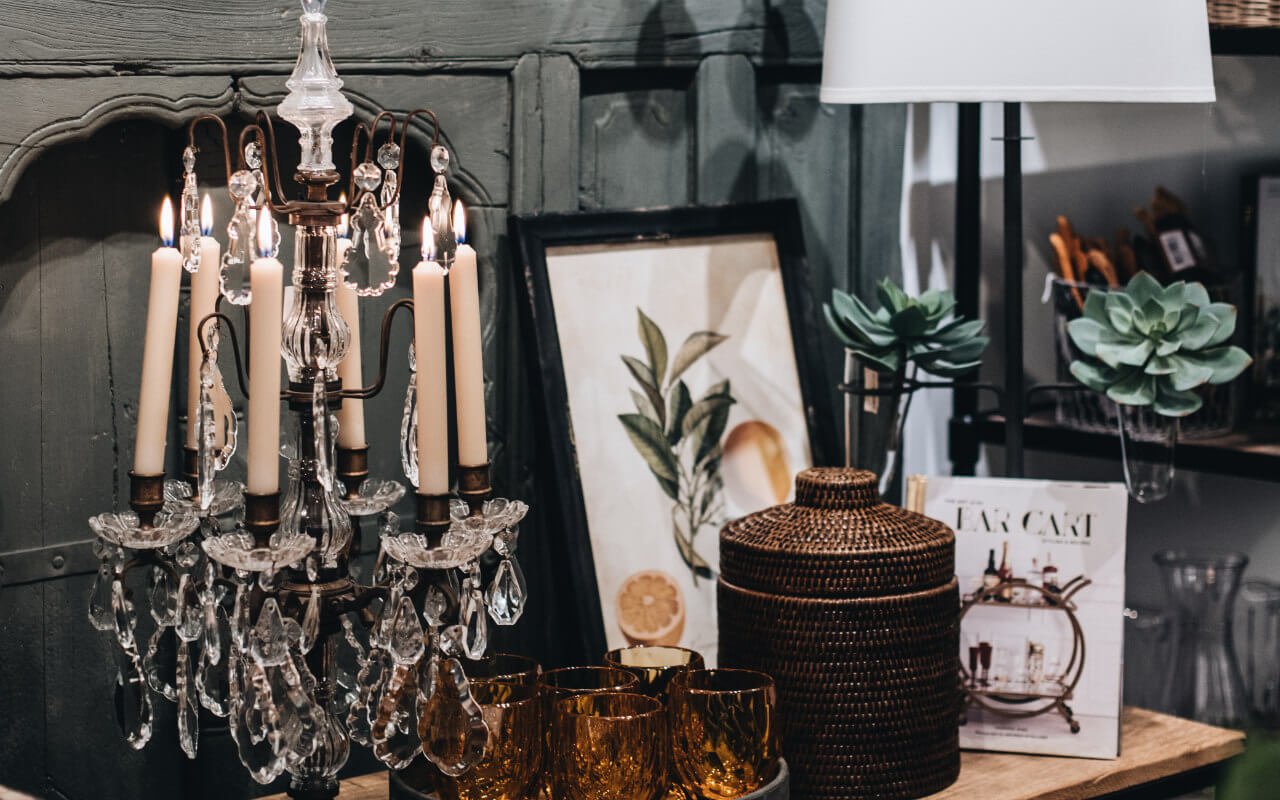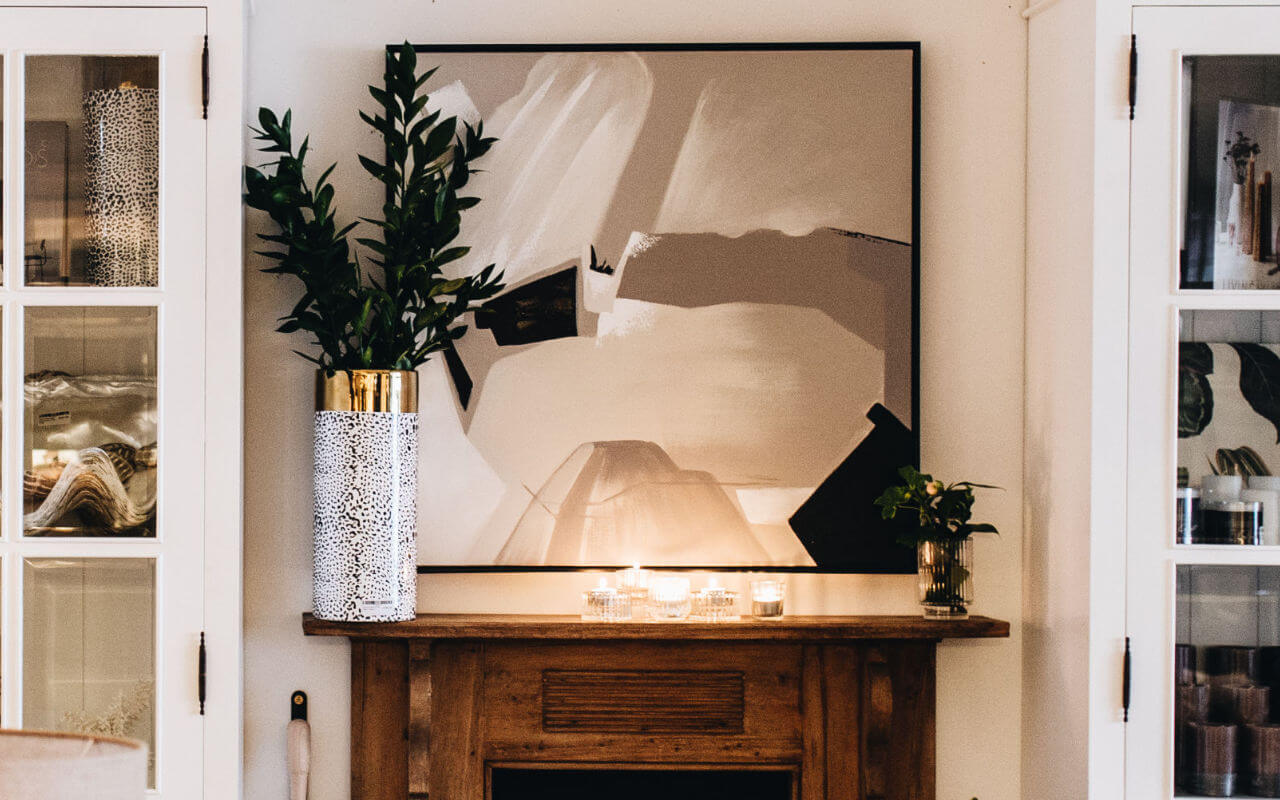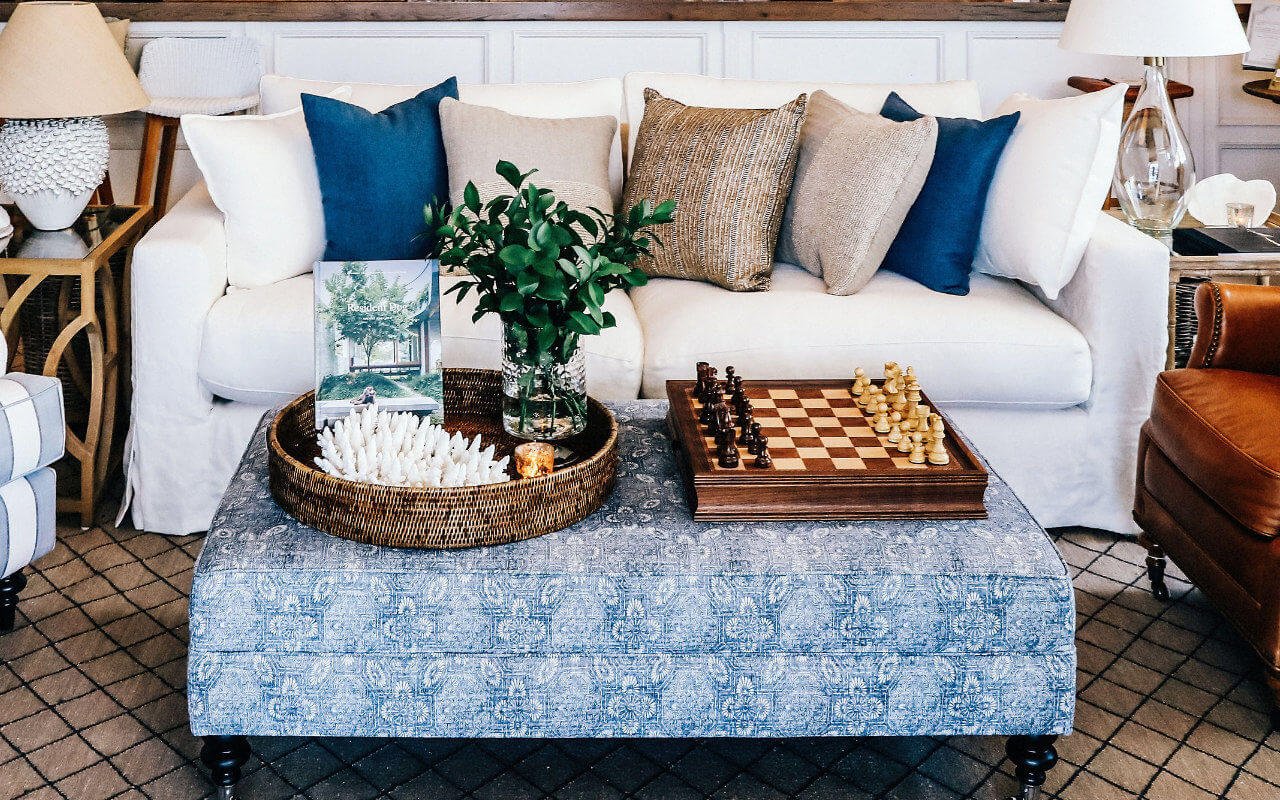Japandi Style style interiors are calming, airy, tranquil, and warm.
Table of Contents
OUR TOP 10 JAPANDI STYLE DESIGN TIPS
Japandi Style Colour Palette
The Scandinavian colour palette is monochromatic, softened with light neutrals, pale wood tones, pastel greens, blues, and pinks.
Japanese design places emphasis on warm, richer earthy colours and darker woods.
In Japandi style, these colour palettes combine to create a harmonious, peaceful foundation of neutrals including beige, cream, oatmeal, tan, and stone.
For visual richness, include organic elements that are naturally deeper in colour such as tan bamboo, dark woods, and rattan. Soft blues, plums, grey, mint, and emerald green add softness when combined with these materials.
For added contrast, add accents of indigo blues, dark greys, black and brown.
Photo Source: Anthology Creative
Japandi Style Architecture
Architectural features include oak ceiling beams, floor-to-ceiling windows, sliding screens, wooden wall slats, lime-wash finishes, hand-cut millwork, and stone slabs.
Value is placed on the beauty of the materials and quality of craftsmanship involved in building the home, selecting materials can naturally patina over time.
Photo Source: Architectural Digest
Japandi Style Flooring
Natural wood flooring is the perfect addition to a Japandi home, in either dark stain, or natural or pale oak finishes, depending on your preference.
Add visual interest by incorporating different-textured rugs in warm neutrals, and layering them for a cosy and tranquil space.
Photo Source: labellavie
Photo Source: Norm Architects
Japandi Style Lighting
Organically shaped lights and lamps are often the key statement piece. Pendant lights crafted from paper, sisal, jersey or bamboo add visual weight, balancing out the low-sitting furniture and while rattan floor lanterns provide a soft diffused, ambient light.
Scandinavian-style adjustable floor, wall, and table articulated lights feature matte black or white shades to provide structure and a modern feel.
Photo Source: Anthology Creative
Japandi Style Window Treatments
Japandi design favours a seamless indoor/outdoor experience, with strong ties to the natural environment. As such, window treatments are kept to a minimum, with fabric choices including ultra-sheer linen or cotton muslin curtains and roman shades.
Bamboo or roller blinds are perfect for adding privacy, whilst preserving the circulation of natural light and tying in with the existing materials.
Photo Source: Norm Architectrs
Japandi Style Furniture
Choose functional and simple furniture with pared-down lines and little to no ornamentation, crafted from natural and organic materials of bamboo, rattan, and unfinished wood.
Japandi-style homes aim to evoke a sense of spaciousness and calm, so low-sitting furniture choices such as low benches, futons, beds, pedestal tables, and chairs will make the space appear visually open and expansive with a zen-like quality.
With a preference for clutter-free spaces, this style makes use of clever and discrete storage. Baskets, containers, folding screens, minimalist shelving, and built-ins are designed to fade into the background, allowing the craftsmanship of each furniture piece to breathe and stand out.
Upholstered linen, cotton, flax blends, or woolen armchairs chairs, and sofas add cosiness and warmth.
Photo Source: A1000x Better
Photo Source: Norm Architects
Japandi Style Texture and Materials
One of the most notable features of this style is the layering of different textures and materials. As mentioned earlier, natural wood in both light and dark tones is the main element used in furniture, flooring, wall treatments, and architectural details.
Other materials include bamboo, rattan, paper, iron, marble, stone, and leather.
Decorative cushions, throws and bedding are crafted from textured linens, brushed cotton, velvet, chunky wool knits, jute, and hemp, in warm and earthy neutrals.
Photo Source: Suzie Anderson Home
Photo Source: Norm Architects
Japandi Style Artwork & Mirrors
Art is intentional and minimal, featuring simple shapes, watercolour designs, and abstract prints in slim, wooden frames.
Large mirrors in rounded, half-moon, or asymmetrical designs are positioned intentionally, to reflect the indoor or outdoor greenery and plants, and contribute to the feeling of spaciousness.
Photo Source: A 1000x Better
Photo Source: Anthology Creative
Japandi Style Home Decor
When it comes to Japandi-style accessories, every item has its purpose and is often hand-made. The ancient Japanese concept of wabi-sabi refers to harmony, balance, and beauty evident in imperfections and the passage of time.
This philosophy prizes handmade, timeworn, and irregularly shaped objects, seeing cracks, uneven glazes, and chipped paint as unique and special elements.
Items include:
- Earthy ceramic tableware
- Handmade vases
- Sculptural objects crafted from clay, terra cotta, and wood
- Wooden or rattan trays
- Old books
- Foraged branches and stones
- Gently fragranced candles and incense
Shop the Japandi Style Collection Here
Photo Source: Suzie Anderson Home
Photo Source: Yellowtrace
Photo Source: Norm Architects
Japandi Style Living Energy
For a seamless indoor/outdoor space, including an abundance of greenery and plants such as ficus, ferns, vines, fiddle leaf figs, bamboo, potted hanging plants, or bonsai. These add a natural vibrancy, add freshness, colour and soften the clean lines and minimal interiors.
Ikebana is the Japanese art of arranging flowers, such as orchids and cherry blossoms with cut stems, leaves, grasses, and branches according to ancient principles, rooted in Zen Buddhism, to create movement, balance, and harmony.
We recommend researching this form of floral arrangement, as this practice is beautifully rich in history, culture, and spirituality.
Photo Source: Suzie Anderson Home






















